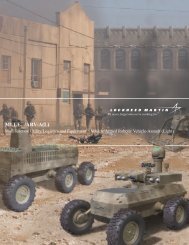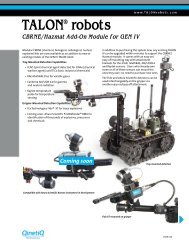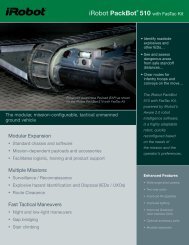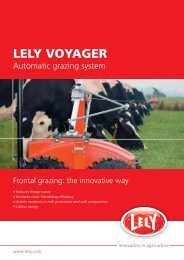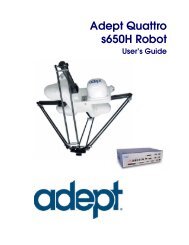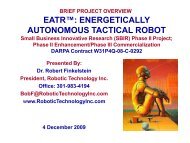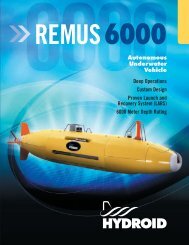INDUSTRIAL ROBOTS AND ROBOT SYSTEM SAFETY
INDUSTRIAL ROBOTS AND ROBOT SYSTEM SAFETY - Asimo.pl
INDUSTRIAL ROBOTS AND ROBOT SYSTEM SAFETY - Asimo.pl
You also want an ePaper? Increase the reach of your titles
YUMPU automatically turns print PDFs into web optimized ePapers that Google loves.
established to achieve the actual coordinate information for the robot and other<br />
equipment. The program can be transferred directly or by cassette or floppy discs.<br />
After the program has been completely transferred to the robot's controller, either the<br />
lead-through or walk-through technique can be used for obtaining actual positional<br />
coordinate information for the robot's axes.<br />
FIGURE 5. OFF-LINE PROGRAMMING OR TEACHING.<br />
When programming robots with any of the three techniques discussed above, it is<br />
generally required that the program be verified and slight modifications in positional<br />
information made. This procedure is called program touch-up and is normally carried<br />
out in the teach mode of operation. The teacher manually leads or walks the robot<br />
through the programmed steps. Again, there are potential hazards if safeguarding<br />
devices are deactivated or inoperative.<br />
3. DEGREES OF FREEDOM. Regardless of the configuration of a robot, movement<br />
along each axis will result in either a rotational or a translational movement. The<br />
number of axes of movement (degrees of freedom) and their arrangement, along with<br />
their sequence of operation and structure, will permit movement of the robot to any<br />
point within its envelope. Robots have three arm movements (up-down, in-out, sideto-side).<br />
In addition, they can have as many as three additional wrist movements on<br />
the end of the robot's arm: yaw (side to side), pitch (up and down), and rotational<br />
(clockwise and counterclockwise).<br />
III. HAZARDS.<br />
The operational characteristics of robots can be significantly different from other machines and<br />
equipment. Robots are capable of high-energy (fast or powerful) movements through a large volume<br />
of space even beyond the base dimensions of the robot (see Figure 6). The pattern and initiation of<br />
movement of the robot is predictable if the item being "worked" and the environment are held



